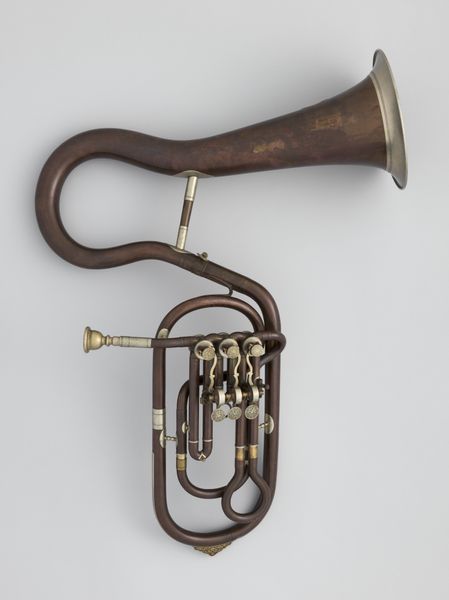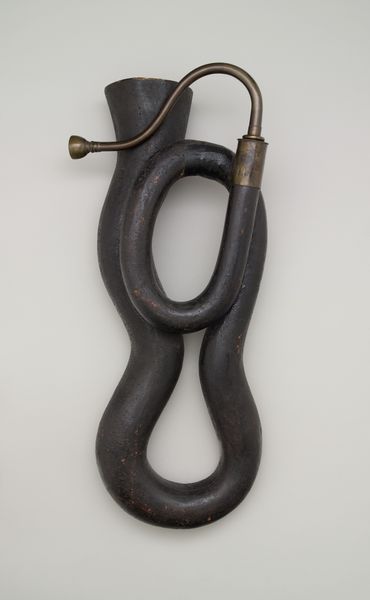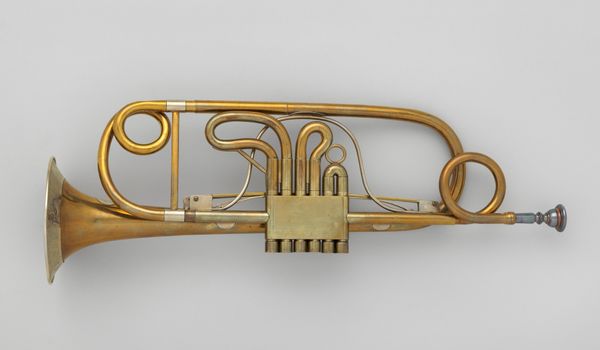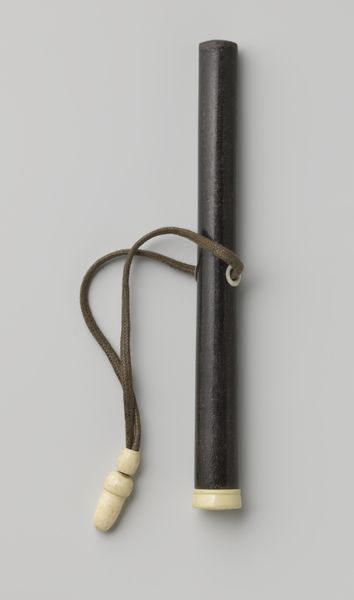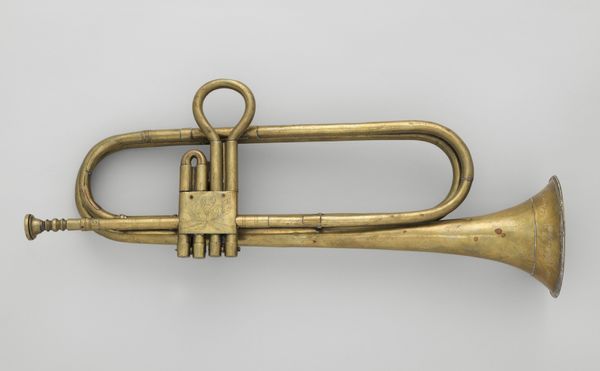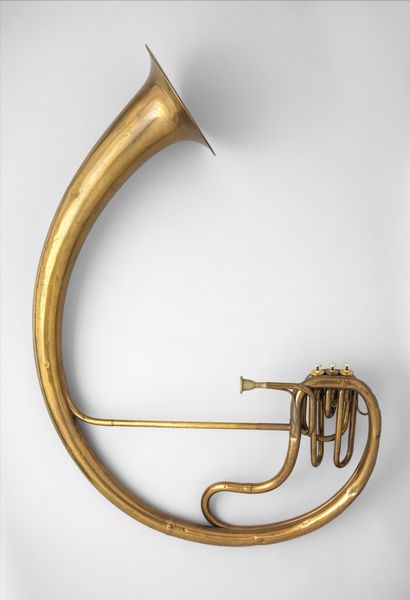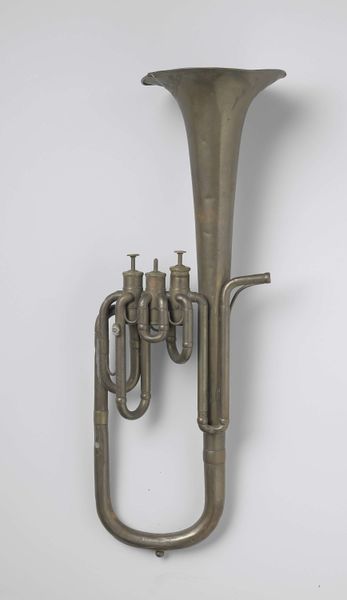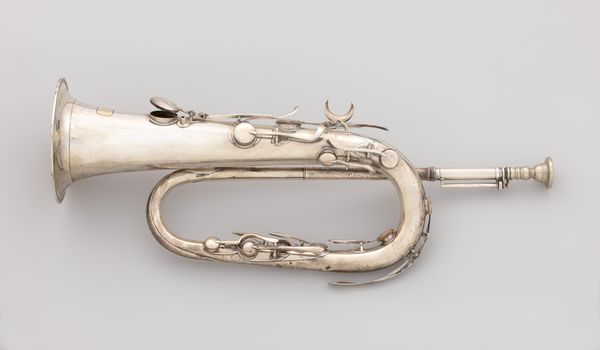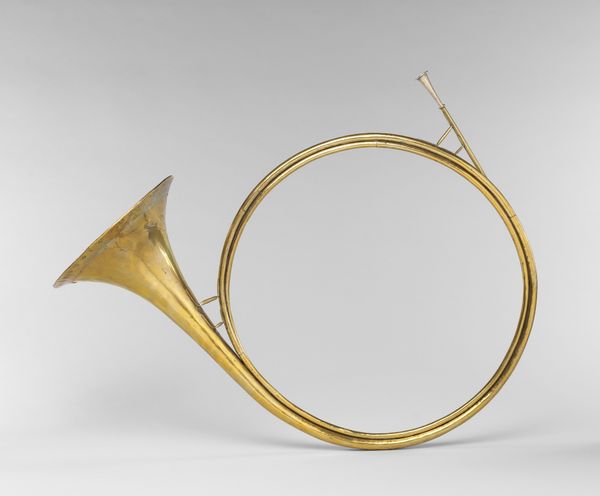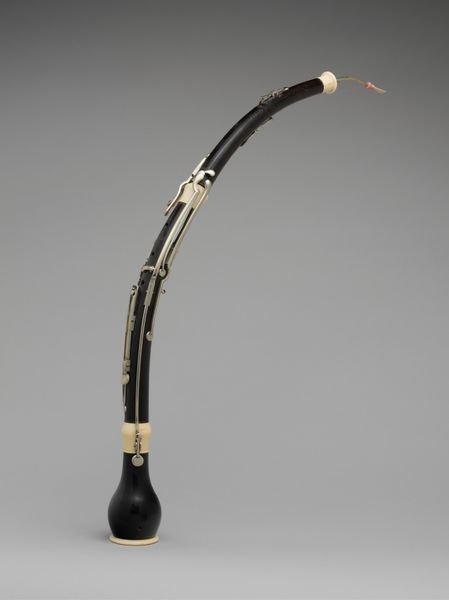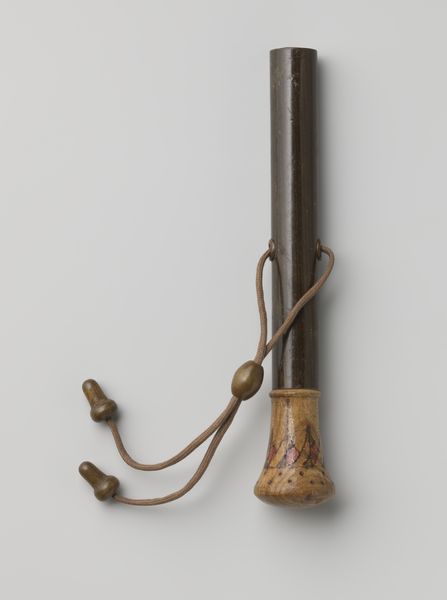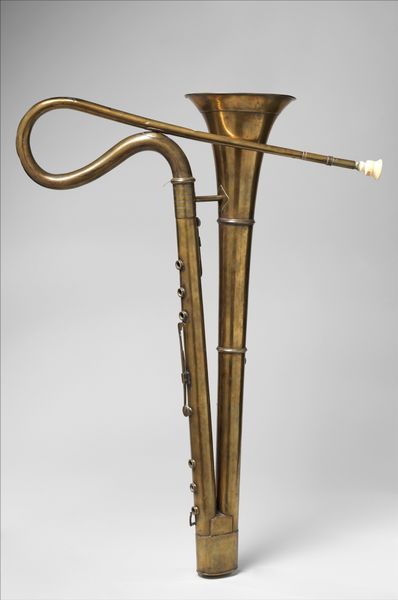
bronze, wood
#
bronze
#
wood
#
musical-instrument
Dimensions: Length 73.5 cm, Diameter of bell 10.1 w/o brass garland, Thickness: +/- 0.6 cm (measured 4 cm in from bell), +/- 0.7 cm at mouthpipe socket, Diameter of mouthpiece socket 0.590 in., Diameter of tube socket 0.875 in.; Length of tube: +/-206 cm +/-22.8 cm mouthtube (exposed part) Total +/-228.8 cm w/o mouthpiece
Copyright: Public Domain
Curator: Serpent in C, dating from between 1830 and 1850. Thomas Key crafted this wind instrument out of wood and bronze. Looking at the curves of the serpent and the gleam of the bronze, it feels surprisingly modern for its age. How do you interpret this object, considering its purpose and form? Editor: I think it’s fascinating that this was crafted by Thomas Key from humble materials like wood and bronze into such an intricate instrument. Considering that, what does the craftsmanship itself reveal about its original context or intended audience? Curator: Well, let's focus on the labor involved. Working with wood and bronze in this way speaks volumes about the available tools, the maker’s skill, and the value placed on handcrafted musical instruments at the time. Mass production wasn’t the norm, so each serpent would have been unique. Editor: Right. So, each instrument reflects both Thomas Key's unique talent and also the community they lived in. Did instruments like this occupy a space between fine art and craft? Curator: Precisely. Consider its function—to make music—versus its construction as an object. The bronze keys, the shaping of the wood… These materials had to be carefully chosen, sourced, and then skillfully manipulated. Editor: It’s almost like an exercise in resourcefulness and ingenuity, then. What does that say about societal values? Curator: Exactly! The labor intensiveness of creating the serpent suggests that music and the creation of musical instruments held a significant cultural value to certain people in the 19th century, or, at the very least, wealthy patrons of the arts and culture. How were such unique items typically sold? Or bought? What societal needs or rituals were satisfied by the existence of something like the Serpent? Editor: That's fascinating. I hadn't considered the market around handcrafted instruments. Looking at it now, I can see the serpent not just as an object, but as a snapshot of material conditions and values. Thanks for illuminating all of those social elements. Curator: Indeed. By closely examining its material and production, we move beyond aesthetics to see it as a product deeply embedded in its historical context.
Comments
No comments
Be the first to comment and join the conversation on the ultimate creative platform.
